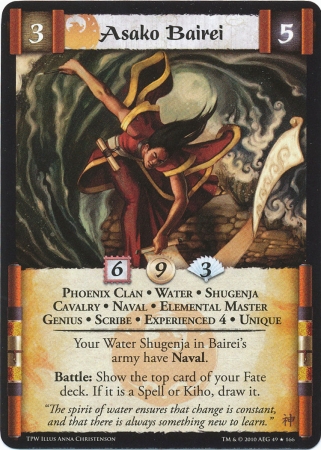The
Scribe
NPC
by
Ed
Greenwood
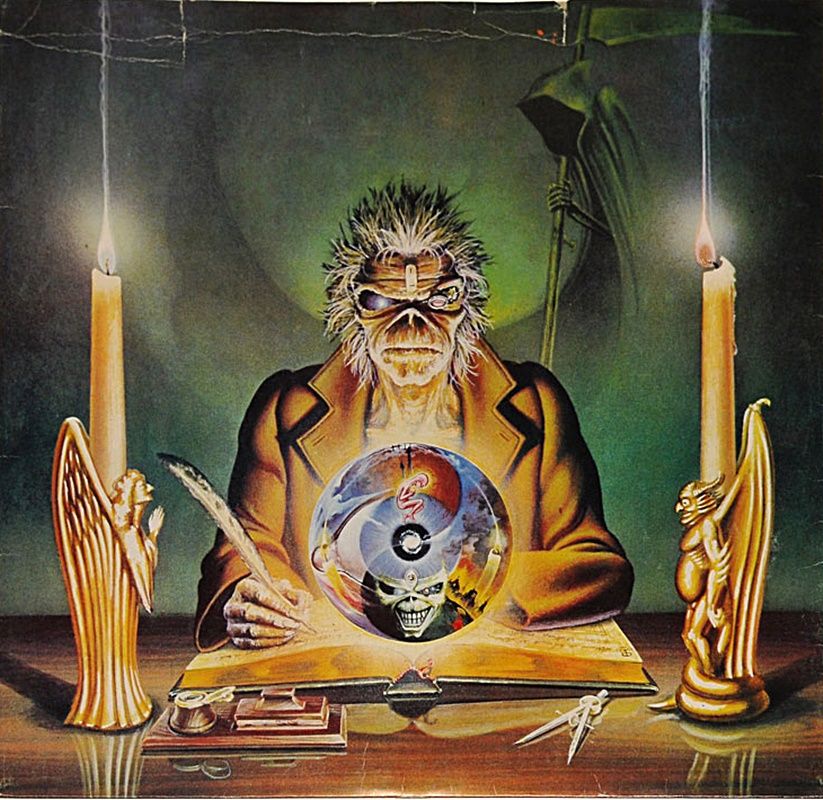
The
Scribe
NPC
by
Ed
Greenwood

| Scribe Special Abilities | A (Copy) | B (Counterfeit) | C (Illustrate) | D (Recognize magickal script) |
| - | Advancement | - | Thongolir |
|
| Classes | Dragon 62 | Best of Dragon, Vol. IV | Dragon |
1. SUBCLASS = n/a
2. SOCIAL CLASS MINIMUM = <>
3. ABILITY SCORE MINIMUMS
STRENGTH = 6
INTELLIGENCE = 16 (*17)
WISDOM = 10
DEXTERITY = 15 (*17)
CONSTITUTION = 6
CHARISMA = 6
COMELINESS = 3
4. POSSIBLE RACES & MAX. LEVEL ATTAINABLE = all races, unlimited
advancement for all races
5. MULTI-CLASS POSSIBILITIES = none (no dual-classing, either)
6. HIT DIE TYPE = d4
7. MAXIMUM NUMBER OF HIT DICE = 10
8. SPELL ABILITY = yes
9. ARMOR PERMITTED = any
10. SHIELD PERMITTED = any
11. WEAPONS PERMITTED = any
12. OIL PERMITTED = <>
13. POISON PERMITTED = <>
14. ALIGNMENT = any (typically N-oriented)
15. STARTING MONEY = <3d10 x 10 gp?>
16. WEAPON PROFICIENCIES = <1>
17. NON-PROFICIENCY PENALTY = <-5>
18. NON-WEAPON PROFICIENCIES = Read/write
in all languages. Calligraphy. Heraldric proficiencies. Painting. (Bonus
proficiencies). <5?>
19. STARTING AGE = <human: 24+2d8?>
20. COMBAT = always attacks as a L1 fighter
21. SAVING THROWS = as fighter
22. MAGIC ITEMS = all not restricted to another class. any scroll they
can read.
Akin to the sages and magic-users of the AD&D™
world are
those few artists who combine extraordinary craftsmanship
with a mastery of the social and magical uses of language and
symbols — the scribes. Most scribes make their livings as servants
to courts or large merchant companies, although a few do
free-lance work in large cities. Most scribes are keen students
and collectors of maps, codes, fragments of lost languages,
armorial bearings, signs, runes, and glyphs.
Scribes may be of human or demi-human racial stock (including
crossbreeds), and of any alignment. The mercenary
nature of a scribe’s profession and the breadth of views and
ideas to which he or she is exposed lead most scribes to be of
neutral-oriented alignments.
To become a scribe, a NPC must have minimum
ability scores of 16 in intelligence, 15 in dexterity, and 10
in wisdom. Once the profession is undertaken, an individual
cannot lose scribe status by decreases in these ability scores
(although these changes may affect the performance of a
scribe). Scribes may not be multi-classed, nor may they have
two classes; their work and studies are too time-consuming to
allow for irrelevant training. Scribes possessing both intelligence
and dexterity scores of 17 or greater add 10% to earned
experience points.
Few scribes advance beyond the level of Scholar, and fewer
still attain the title of Scribe. Higher Atlars are rare indeed, and
are known by no special titles if they continue to advance in
levels. There are no restrictions to level advancement because
of racial stock or ability scores.
SCRIBES TABLE I
| Experience points | Experience level | 4-sided dice for accumulated HP | Level title | Special Abilities |
| 0—2,250 | 1 | 1 | Clerk | A, B, C, D |
| 2,251—4,500 | 2 | 2 | Amanuensis | - |
| 4,501—9,000 | 3 | 3 | Chirographer | - |
| 9,001—18,000 | 4 | 4 | Illuminator | - |
| 18,001—35,000 | 5 | 5 | Scrivener | A (from memory) |
| 35,001—60,000 | 6 | 6 | Cartographer | - |
| 60,001—95,000 | 7 | 7 | Scholar | - |
| 95,001—145,000 | 8 | 8 | Limner | - |
| 145,001—220,000 | 9 | 9 | Scribe | - |
| 220,001—400,000 | 10 | 10 | Master Scribe | - |
| 400,001—600,000 | 11 | 10+3 | Atlar | Spell use |
| 600,001—800,000 | 12 | 10+6 | Higher Atlar | - |
200,000 experience points per level of experience beyond
12th.
Scribes gain 3 hit points per level after the 10th.
In combat, a scribe has no weapon or armor restrictions, but
always attacks as a first-level fighter, regardless of level of
experience as a scribe. A scribe makes saving throws as a
fighter of level equal to his or her own scribe level.
A scribe may
employ all magic items not specifically restricted to another
class, and may cast spells from all scrolls which the scribe can
read. For example, an illusionist’s scroll would be unreadable to
a scribe who had not learned the secret language of that profession,
although that same scribe could copy the unreadable
script, as detailed later — and many scrolls would require a
Read Magic on the part of the scribe wishing to use them, if the
spells were not ones the scribe had encountered before.
Upon reaching the level of Atlar (11th), ascribe gains limited
spell-casting ability. He or she may memorize 2 spells, plus 1
additional spell per point of intelligence above 16, studying to
gain them as magic-users do. For each level of experience
beyond 11th attained by the scribe, he or she gains the ability to
learn 2 additional spells; however, the variety of spells a scribe
may cast is quite limited (see hereafter). Scribes are subject to
the same requirements of rest, material components, and freedom
from disturbance while casting that magic-users are. Just
like other spell-casting characters, a scribe cannot make a
physical attack and cast a spell in the same round.
A scribe must acquire spells; they are not granted to him or
her by the gods. When first learning to use a new spell, a scribe
must be tutored by a spell caster whose class employs that
spell, and who is personally familiar with the spell. Thereafter,
the scribe can memorize the spell unaided. A scribe casts all
spells as a magic-user, illusionist, or cleric of the same level as
himself or herself, and in the case of the Glyph of Warding spell,
cannot cast glyphs restricted to a god of an alignment he or she
does not share.
Note that the abilities (described hereafter) of a scribe include
the effects of a Write spell, but
this does not require any
magic on the part of a scribe.
If a campaign includes new spells (not found in the AD&D
rules), such as those devised by player characters, a scribe
given the opportunity to learn them will be able to use all spells
related to symbols or script. A scribe is otherwise limited to the
spells listed in Scribes Table II, all of them cast exactly as
described in the PH.
SCRIBES TABLE II
Spells usable by scribes
| Comprehend Languages (as the 1st-level magic-user spell) |
| Confuse Languages (reverse of Comprehend Languages) |
| Erase (as the 1st-level magic-user spell) |
| Explosive Runes (as the 3rd-level magic-user spell) |
| Glyph of Warding (as the 3rd-level cleric spell) |
| Illusionary Script (as the 3rd-level illusionist spell) |
| Legend Lore (as the 6th-level magic-user spell) |
| Read Magic (as the 1st-level magic-user spell) |
| Symbol (as the 8th-level magic-user spell) |
| Unreadable Magic (reverse of Read Magic) |
Note: A scribe’s effective level as a spell-caster is equal to his
or her actual scribe experience level minus 10; thus, when an
11th-level scribe first gains spell-using ability, he or she casts
those spells as though the individual were at the first experience
level of the class to which the spell belongs.
A scribe can memorize a number of spells up to the limit
allowed by experience level and intelligence; the level of the
spells memorized does not matter. (For instance, an Atlar, immediately
upon gaining spell-using ability, can memorize a pair
of Symbol spells if he or she so desires, and is not restricted to
first-level spells like Erase and Comprehend Languages). A
scribe may not devise his or her own spells, nor does a scribe
have the expertise to modify a known spell.
Scribe special abilities
Spell-casting is a power gained only through much study and
the development of a scribe’s distinctive special abilities. It is
these abilities that will shape (and permit the continuance of, by
putting food on the table) a scribe’s life. They are as follows:
All scribes have the ability to draft and execute records, letters,
and documents of accepted local style and form, and
to design motifs, armorial bearings, and illustrations acceptable as
regards style and content, in local (and trading) society.
Scribes are wordsmiths and artists; their work is always of good
quality, and often contains codes, hidden messages, and symbolism,
either at the request of a client or out of a craftsman’s
pride in his or her work.
If a tutor is available, a scribe may acquire
mastery of one
language per point
of intelligence, in addition to the alignment,
racial, and common tongues already known by the
scribe. If
several inscriptions of some length are available, a scribe may
(and this is the only case where a scribe may “teach himself”)
through study achieve a mastery of the written (not spoken)
form of a language — including codes and secret languages,
such as that shared by illusionists. This mastery, unless improved
by a tutor, will begin at 80% accuracy and increase by
2% for every level the scribe attains thereafter.
Special ability A (Copy): A scribe can copy inscriptions
and script
(regardless of whether these are in a language known to the
scribe) and all symbols or representations
(including protective
circles, runes, glyphs, and the
like). This includes spell
formulae — unless such are cursed or trapped in such a way as
to preclude a complete visual examination of them, or are
concealed by an Unreadable Magic spell.
At 5th level, a scribe gains the ability to perform this skill from
memory, the amount that can be retained in such a way increasing
with level, intelligence, and wisdom (determined specifically
by the DM).
The percentages given for this ability in Table III are to be
applied to codes or magical formulae only; mundane material
can be copied correctly with far greater ease (double the
chance of success given in the table, to a maximum of 100%).
Special ability B (Counterfeit): A scribe can
counterfeit the script and
presentation of an original (given the necessary ingredients to
match colors of ink, and so on). The chance of fooling or
convincing an individual familiar with the original increases
with the level of the scribe, reaching a maximum of 99%. Note
that a copy can contain errors or omissions and still fool an
individual who is familiar with the original. A DM can also use
this ability to govern situations where a scribe sketches a portrait
of an individual to show to others, wanting to know if other
persons have seen the individual in question. A successful
result indicated on an attempt like this means the scribe has
composed a clear, unmistakable likeness of the person.
<compare with the article on forgery>
Special ability C (Illustrate): Scribes are illustrators
of exceptional skill,
and with experience they can master perspective, proportion,
and the ability to capture the likeness of a being, even from
memory. From practice of these faculties they gain the ability to
correctly judge distances and sizes (area and volume), merely
from quick visual examination. The accuracy of such judgements
increases with advancement in levels.
Special ability D (Recognize Magickal Script):
Scribes have the ability to recognize “at a
glance” that symbols or script are magical in nature. With experience,
they perfect the ability to identify the precise nature of a
particular specimen or specimens. A scribe can tell whether a
certain inscription is a spell formula — but not what spell it is,
unless the scribe is familiar with that spell. A scribe can tell
whether a piece of script or a written design is cursed, guarded
by Explosive Runes or Unreadable
Magic, whether is it lllusionary
Script or not, whether a particular rune is a Symbol or Glyph
of Warding or not (and if so, what its particular nature is, if the
spell in question is familiar to the scribe), or whether an inscription
is normal script upon which Nystul’s Magic Aura or Leomund’s
Trap has been cast, and so on.
This identification, if successfully attempted, will not trigger
any release of magic connected with the symbol or script. Only
one attempt per specimen may be made by a scribe. If unsuccessful,
the scribe may not try again on a particular inscription
until he or she attains a new level. An unsuccessful attempt may
also (at the DM’s option) unleash any magic contained in protective
or “trap” spells upon the unfortunate scribe.
Atlars and Higher Atlars can make scrolls of spells whose
formulae they possess, and can inscribe protective pentagrams,
circles, and signs, whether or not they know or comprehend
the spell in question. (For details of such protective inscriptions,
refer to the DMG
and issue #56 of
DRAGON™ Magazine.) There is a 10% chance of error in such
activities, with a modifier of -5% if the scribe is familiar with the
spell and has performed the action (making the scroll or rune)
successfully before, and (cumulative with the first modifier)
-5% if supervised by a spellcaster of sufficient level and proper
class to cast the spell in question, and who has prior experience
with the spell.
This chance for error is to be combined with that detailed
under “Failure,” DMG
p. 117-118, when the manufacture of a
scroll is being attempted. Refer to the DMG, p. 121, for fees
charged by scribes for manufactured scrolls. The cost to a
customer for the creation of a scroll by a scribe will always be at
least equal to the prescribed Gold Piece Sale Value for that
scroll, unless special circumstances prevail. <with regards to this,
the price may be twice that indicated, as these are sale values, which
are typically set at 50% - prespos>
Much of a scribe’s time is spent executing letters and documents,
for the scribe is a master of the etiquette of both local
society and international politics and trade communications.
Such mundane work earns most scribes their bread and butter.
Most scribes seek employment with a sage
or spell-caster,
preferring that over working for a court or a wealthy patron, and
in turn preferring that second alternative over free-lance work,
which tends to bring assignments either tedious or too difficult
to undertake at the payment offered.
Note: All abilities reach their greatest chance of success at
12th level, and do not increase thereafter.
SCRIBES TABLE III
Percentage chance of success of special abilities
Experience level of scribe
| Special
ability |
1st | 2nd | 3rd | 4th | 5th | 6th | 7th | 8th | 9th | 10th | 11th | 12th |
| A | 25 | 33 | 42 | 52 | 63 | 75 | 88 | 99 | 100 | 100 | 100 | 100 |
| B | 15 | 25 | 35 | 45 | 55 | 65 | 75 | 85 | 95 | 99 | 99 | 99 |
| C | 5 | 12 | 19 | 26 | 33 | 40 | 52 | 64 | 76 | 88 | 90 | 96 |
| D | 7 | 13 | 20 | 28 | 37 | 47 | 58 | 70 | 83 | 97 | 99 | 99 |
Advancement
A scribe gains XP through the practice of his
or her craft: the perfect execution of a difficult portrait or design,
or the development of innovations in the format, content,
or accomplishment of a task.
Determination of an innovation or an exceptional or “perfect”
execution is governed by the DM, and may be found by rolling
percentile dice every time a scribe applies his or her skills to a
task of moderate (or greater) complexity. A modified score of
96 or higher denotes such an occurrence.
The dice roll is modified by +01 if the scribe has INT
of 18 or higher, and by +01 for each week spent on the project
(such time being considered as more or less continuous work
on the project, the scribe’s attention being divided only between
this work and his or her minimum physical needs).
For each previous innovation or exceptional execution a
scribe has made in work directly related to the task at hand, he
or she gets another die roll, choosing the better (or best, if more
than one extra roll is deserved) result as the measure of his or
her performance of the task.
Each such successful innovation or exceptional execution is
worth a base value of 500 Experience Points, modified by plus
or minus 200 points at the DM’s discretion (taking into account
the circumstances and nature of the task, prior experience of
the scribe in the particular field, and other variables).
If the roll fails, and no innovation or outstanding work is
performed, a scribe still gains at least one point of experience
for successful completion (to the satisfaction of the scribe’s
client or patron, or if for the scribe’s own benefit, completion to
a practical, usable form) of all tasks of moderate (or greater)
complexity.
A scribe can also gain experience by the study of maps or
records new to the character, at the rate of 10-60 (d6 x 10)
Experience Points for each such source consulted, as long as
the DM judges the source(s) to contain appreciable information
new to the scribe.
A scribe gains no direct experience awards
for success in
combat or in the winning of treasure.
To advance to a new experience level, a scribe who has
accumulated the necessary experience points must study
under another scribe or a sage, or must receive training from a
bard or spell-caster plus an artist, a cartographer, or an engineer.
If a scribe’s tutor is of a classed profession, he or she must
be of a level higher than the scribe’s own present level. Tutors of
non-classed professions must be considered by the DM to have
relevant knowledge or skills that will appreciably further the
abilities of the scribe. A scribe of 10th or higher level will almost
certainly require the services of a tutor from one of the spellcasting
classes to advance to a new level.
Obviously, the level-by-level progress of a scribe tends to
take much time — and most scribes will consent to provide
maps, letters, and on-the-spot dungeon surveys for adventurers
only in return for large amounts of money. Time spent away
from books, writing table, and easel is time wasted, you see....
zb
<"Now I've written the whole thing: for Christ's sake give me a drink" - Anon.>
9.
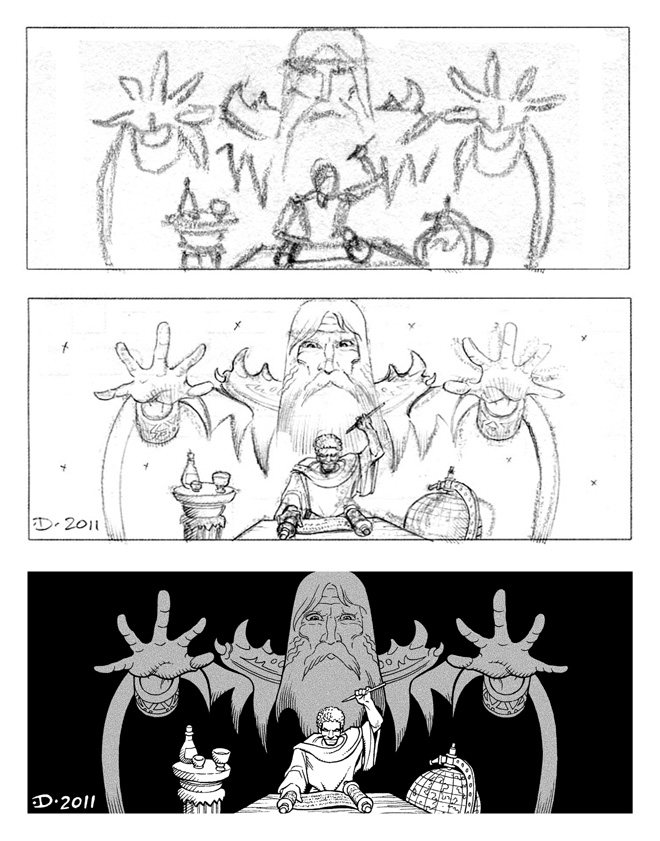
8.
Wilshire the Unfortunate
7.
Barth, Cartographer
6.
I8.IV
5.
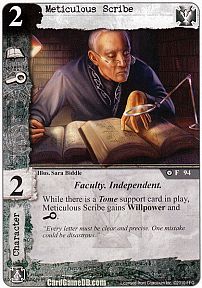
4.
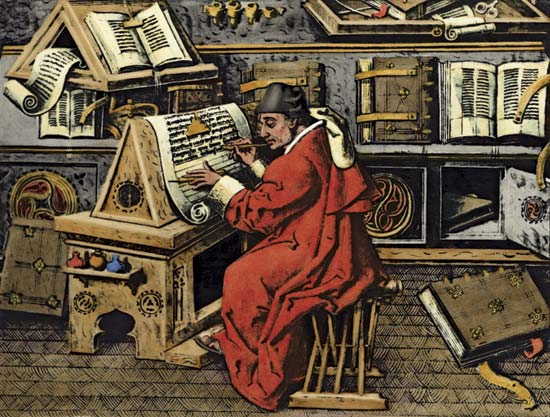
3.

2.
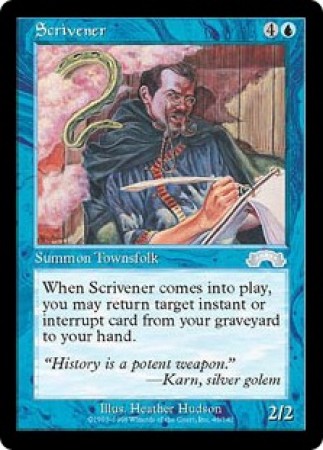
1.
